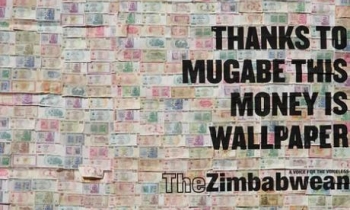The guitar strums and a male voice intones: "I always tell myself, just a half hour. But six hours later I’m still on." The chorus kicks in: "MySpace is the place where I can go to be free. MySpace is the place where I can go to read about me . . . "
The song is a satirical rock track written by a Los Angeles band called The Fresh which, like many others, uses the hugely popular social networking site to promote its music. But it is an anthem that rings uncomfortably in the ears of many advertising executives as they confront perhaps the biggest challenge to the industry since radio gave way to television half a century ago.
For MySpace , the site bought by Rupert Murdoch’s News Corp last year for $580m, is dramatically changing the way young people consume media. It is not alone. Facebook, YouTube and Bolt are other sites that have grown rapidly by offering networking opportunities and a forum in which to watch and share user-generated video and music.
Teenagers’ disposable income and brand-awareness means they are coveted by advertisers. Internet companies, too, are vying for a share of the spoils: it emerged earlier this week that MySpace was in talks about forging a search link with either Google or Microsoft.
Youngsters are no longer content to be passive recipients of the programmes scheduled by television stations. The industry is struggling to come to terms with the switch as the jargon has it from a "push" to a "pull" model. In other words, this assertive generation is watching what it wants, when it wants, where it wants.
It is all sending a chill through advertising’s bastions. "There is a palpable sense of discomfort," admits Peter Stabler, head of media at Goodby, Silverstein, a San Francisco-based agency whose clients include Anheuser-Busch, Hewlett-Packard, Netflix.com, Elizabeth Arden, Comcast, Motorola and Doritos. "The media industry has been rather static for 40 years. Now, even in just the last year, there has been more change in media behaviour than at any time since the invention of television. This is leaving many of our clients unsettled."
Although online chat groups, social networks and internet surfing have been consuming a greater proportion of people’s time for years, the ability easily to show, edit and share videos did not exist until the advent of MySpace and its ilk.
The result? There is now a real alternative to television viewing. And that matters badly to a television industry largely financed by advertising.
Fuelling scepticism about television advertising in the US market, the increased use of digital video recorders allows viewers to record shows and then fast forward through the ads.
It is becoming harder to grab the attention even of youngsters who do not have DVRs. Advertisers have realised that members of this generation are skilled "multi-taskers", using laptops or mobile phones to exchange text messages or e-mails while they are watching television.
It is not just the commercial imperative that is driving change. Even Britain’s BBC, the ad-free public broadcaster funded through a mandatory charge made to every British household with a television, is planning to relaunch its website to feature more user-generated content. The aim is to assert its place in the "web 2.0 world" but the move has annoyed commercial rivals, who have criticised the BBC for invading their territory without having to compete for advertising.
But it was driven by research that showed large numbers of young Britons never watch BBC television channels.
The convulsions are being felt especially strongly in the US. It is the biggest market for advertising, with nearly $190bn spent in total in 2004, according to Veronis Suhler Stevenson. Television advertising took a large share of this. A total of $46bn was spent on broadcast TV advertising in the US and another $19bn on cable and satellite television.
But internet advertising is the big growth area. Last year’s record expenditure of $12.5bn while still relatively small represented a 30 per cent increase on 2004 according to PwC, and there is no expectation it will slow. So far, most of the internet advertising money is being spent on search-word advertising, a market dominated by Google. But changes in technology, which make it easier to insert interactive video ads onto a large number of websites, are expected to fuel growth in branded advertising on the web.
"You have to go where the audience is," remarks Ross Levinsohn, the head of Fox Interactive Media, News Corp’s new internet division: MySpace is the jewel in its crown. "Consumers under the age of 30 are clearly more oriented towards interactive media. So you have to be authentic as advertisers and publishers to ensure your message [to them] is not diluted or tossed aside."
Advertisers must do more than simply switch their attention from TV or print to the internet. They must change their marketing tactics as well. Many are already doing so ingeniously.
This week Burger King started sponsoring a special "Have it your way" page on MySpace.com, where users will be able to download-to-own, free of charge, two episodes of 24, the Fox drama series. Wendy’s, another burger chain, recently created a fictional character called the Square (the shape of the company’s burgers) with a MySpace page which attracted 100,000 users. McDonald’s has also experimented, sponsoring a sports writing competition in conjunction with Fox, which invited people to submit entries via blogs on the Fox sports site.
A key moment of realisation for the industry came last year when Mr Murdoch grasped how dramatically the internet was changing the media business. Since his very public damascene conversion, embracing digital media has become a priority for all News Corp’s businesses, from television to newspapers to movies. The media mogul has spent around $1.5bn on acquiring internet companies.
Following his lead, all other media companies have in recent months dropped their resistance to making content available in digital formats on the web, mobile phones and portable devices such as the iPod. Disney’s ABC, for example, has made one its biggest current hits, Desperate Housewives, available on iPods, on-demand, online. It is delivered free with ads and for a fee without.
The shift was strikingly apparent in New York last week when the big US broadcasters ABC, CBS, Fox and NBC made their annual pitches to advertisers. For the first time, the stations fell over themselves to trumpet their capacity to reach online viewers.
"Television is still the lead dog in the game," insists Mr Levinsohn. He is increasingly working with his television counterparts at Fox to sell deals to advertisers which offer both television and online exposure the latter on MySpace and its rivals.
But just as content on the web is different to TV content, video-based web advertising is expected to be different too. And that poses its own challengers to advertisers. "Internet advertising is not a toy any more," adds Pam Zucker, senior vice-president at Marketplace Ignition, part of the media-buying agency MediaVest. "We have really reached a tipping point now because the television guys are taking it seriously. But [marketers] are struggling with what the message should be. As a first step, putting your television ads online is OK. But you have to get to step two quickly and most people are not doing it quickly enough."
So how will this medium change the message? Internet audiences are more fragmented but equally online viewers leave a more visible footprint about their interests, dreams and desires.
This means that advertising is likely to become more targeted, with companies developing an array of different messages for different audiences.
"Advertising needs to be managed across platforms and [unlike for television] has to be something that isn’t annoying or repetitive" says Adam Gerber, vice-presidnet of ad products and strategy at Brightcove, a company focused on making it easier to advertise and market on the internet.
But this diffuse approach may alarm companies used to commanding every aspect of a centralised campaign. "[The new methods] involve a loss of control over your message which is a very scary proposition for all marketers," says Ms Zucker.
Attracting advertisers to user-generated content brings further complications. Much of the content may be unsuitable. As well as potentially distasteful, many of the home videos are very short. The second part of the "MySpace" song describes hunting for pornography on the internet but opting for an exchange on MySpace not a substitution with which most big brands would want to be associated.
Until recently many executives had sought to deny the seismic nature of the changes the media business has undergone. Now most acknowledge them but are frank about how much they have to learn about the Web 2:0 generation.
Says Mr Gerber: "We know the media experience of a 15-year-old today is changing but how does it change in terms of how they control content and choose to view it? We don’t know the answers and we will not know the answers until technology and content owners evolve."
GILLY’S GENERATION: KIND OF GEEKY’ BUT WEB 2.0 RULES
Gilly Bertram embodies the generation that is forcing media executives to re-examine their business models, writes Tom Braithwaite.
"I went to bed at, like, six [am]," confides the 22- year-old, who is studying in Paris. "I couldn’t stop watching television." The note of surprise in the aspiring singer’s voice reveals that, while the late nights are not unusual, an evening in front of the TV is.
"Most of the time I just download stuff," she adds. Music and video arrive down one of France’s ubiquitous broadband lines to her Apple notebook computer. The computer manufacturer also provides that essential of style-conscious youth the iPod music player.
The media content consumed by Ms Bertram and her friends has usually been selected on the internet rather than from the TV listings. If they read a newspaper, it is online; if they watch a TV show, it may have been downloaded onto a laptop.
Advertisers are desperate to find new ways of targeting these young people, who often have high disposable incomes and short attention spans. When the content is generated by the users themselves, on sites such as MySpace or Flickr, the job gets even harder.
Ms Bertram admits to checking for messages and chatting with friends on the social networking site "religiously" on top of the three e-mail accounts she uses. "I’ve got a friend, Noella, her whole life is based on MySpace; I met her on MySpace; and she met her band through MySpace. It’s kind of geeky. But it’s just getting to that meeting point."









